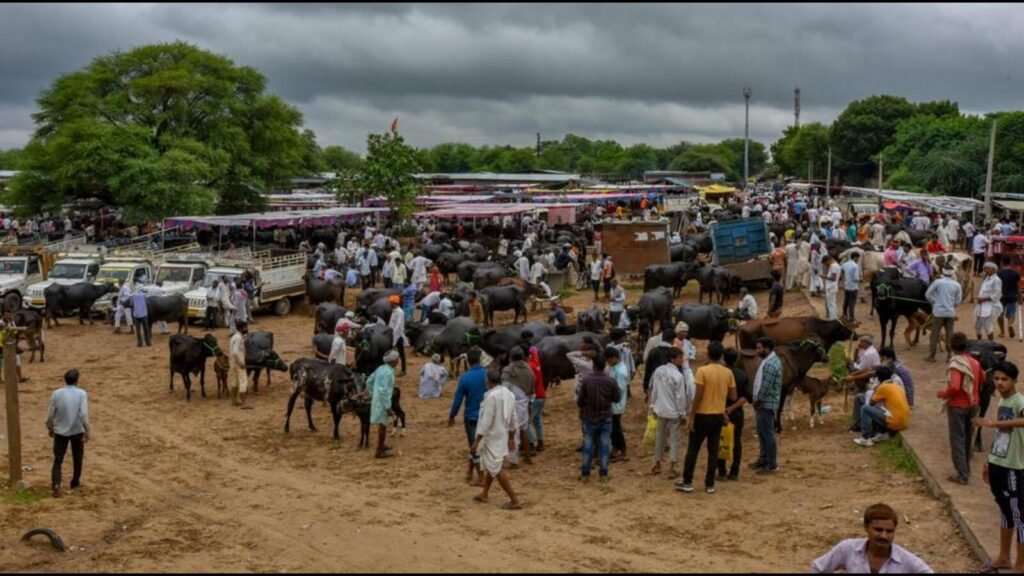
When you navigate the distance between wood-panelled conference rooms in New Delhi to dusty tehsil offices, one lesson keeps returning to your desk, like a live file: India’s policies are at their best when they reflect our Constitution’s moral imagination, and not merely our administrative convenience.

When it comes to animals, the moral imagination begins with a simple proposition that our courts and statutes already recognize: Animals are sentient. Law and jurisprudence in India — reading Article 51A(g) of the Indian Constitution alongside the Prevention of Cruelty to Animals Act and subsequent judgments — acknowledge duties of care towards and the dignity of animals. Once sentencing is admitted, indifference is not a policy option; it follows that standards, budgets, supervision and incentives must encode humane treatment as routine governance, not as an afterthought. Viksit Bharat 2047 has to be a truly civilizational project and animals must be brought squarely into the policy tent.
The law is the North Star, but policy must be the road: Indian law has historically classified animals as movable property. Yet our constitutional duties and the Supreme Court’s articulation of animal dignity caution against policy approaches that reduce animals to mere property or nuisance.
The direction is, therefore, unambiguous; what remains is to translate that direction into daily practice — how a ward engineer handles a community-dog complaint, how a district budgets for fodder after floods, how a hospital canteen or a government hostel frames procurement standards, or how an inspector reads compliance in a slaughterhouse or a dairy.
Today, the absence of a coherent, cross-government policy lens on animals creates familiar state-capacity problems at the frontline. Municipalities oscillate between ad hoc removals of street animals and sporadic sterilization; disaster response scrambles for fodder after landfall; agricultural extension systems are silent on humane housing or antibiotic stewardship; tender documents reward the lowest price, and not the most humane standard; urban planning codes rarely anticipate animal corridors, shade or safe water points. None of this is inevitable. It is the predictable result of a missing bridge between our legal ideals and our administrative routines.
Not fully developed, until fully human: The case for integrating animals into policy frameworks is not special pleading, it is integral statecraft. First, it improves governance clarity, strengthens public health under a One Health approach, reduces economic and reputational risk in supply chains, and aligns with an ethical inheritance that has long urged an expanding circle of compassion.
Standards and enforcement gap: For farmed animals, two gaps require explicit acknowledgement. No standards for some species: Several species of animals raised for food — notably pigs — lack notified, species-specific welfare standards across the production lifecycle (breeding, housing, transport, slaughter).
Weak enforcement where standards exist: In segments where codes or guidance exist (eg, parts of poultry and dairy), practice is uneven. There is limited routine measurement, scarce third-party verification, and few consequences in credit, co-operative procurement, or market access for non-compliance.
Bridging these gaps means three mundane but powerful moves: Notify minimum species-wise standards, make these standards an eligibility condition in schemes, co-operatives and public credit (including refinance windows), and ensure light-touch auditability so compliance costs are proportionate for small holders.
Five shifts by 2047:The good news is that the administrative playbook for integration already exists. We have done this before for gender budgeting, climate tagging, and outcome-based monitoring. The following shifts, executed incrementally and cooperatively, would align policy with law:
One, let money and markets speak the language of welfare. Notify species-specific minimum standards and phase them into the eligibility rules for animal-touching schemes, the procurement norms and by-laws of farmers’ cooperatives, and the credit and refinance windows. of NABARD and public-sector banks.
Two, institutionalize human procurement. Update the General Financial Rules and model bid documents to include humane standards where animals are involved, such as housing, transport, handling, slaughter, breeding, research, pest control, or food. procurement. Value-for-money must count long-term externalities, not just the lowest initial price.
Three, publish a district animal welfare scorecard. A public index that tracks ABC/anti-rabies coverage, facility compliance (dairy/poultry/slaughter), disaster readiness (fodder banks, evacuation SOPs), grievance closure, and frontline training — so managerial attention lands where it should.
Four, invest in human infrastructure. Leverage existing funding windows, such as the 15th Finance Commission grants, rural livelihoods missions, and state plans, to upgrade municipal shelters, veterinary primary care, and humane transport solutions. Small capital investments now prevent chronic cruelty later.
Five, teach compassion as a civic skill. From balwadis to NSS and NCC, embed age-appropriate animal welfare modules to encode empathy, safe conduct around community animals, and responsible caregiving. The next generation of officials, too, should treat compassion as a competency, not a hobby.
Some will justifiably question spending administrative capital on animals amid so many other emergencies. The answer is simple. A civilized state must do more than one good at once. Humane policy is not a detour from development; it is development done maturely. The same tools that can design for animals — clear standards, steady enforcement, honest measurement — are precisely the systems that deliver better outcomes for people too.
Reform works when three elements align — moral clarity, administrative simplicity, and citizen partnership. The first is already in our laws. The second comes when we mainstream an “animal lens”, instead of launching 100 boutique schemes. The third follows as people see conflict reduce, sanitation improve, and compassion role modeled by our systems.
Viksit Bharat 2047 is not just hardware — roads, ports, power. It’s a software project of values, about what and who we bring to count in our national ambition. Bringing animals into the policy tent marks for a confident republic. Light that path now, and we reach 2047 not just materially richer but also fundamentally kinder.
KP Krishnan is a retired IAS officer and has taught at the Indian School of Business and the University of Pennsylvania Law School. Bharati Ramachandran is the CEO of the Federation of Indian Animal Protection Organizations. The views expressed are personal




